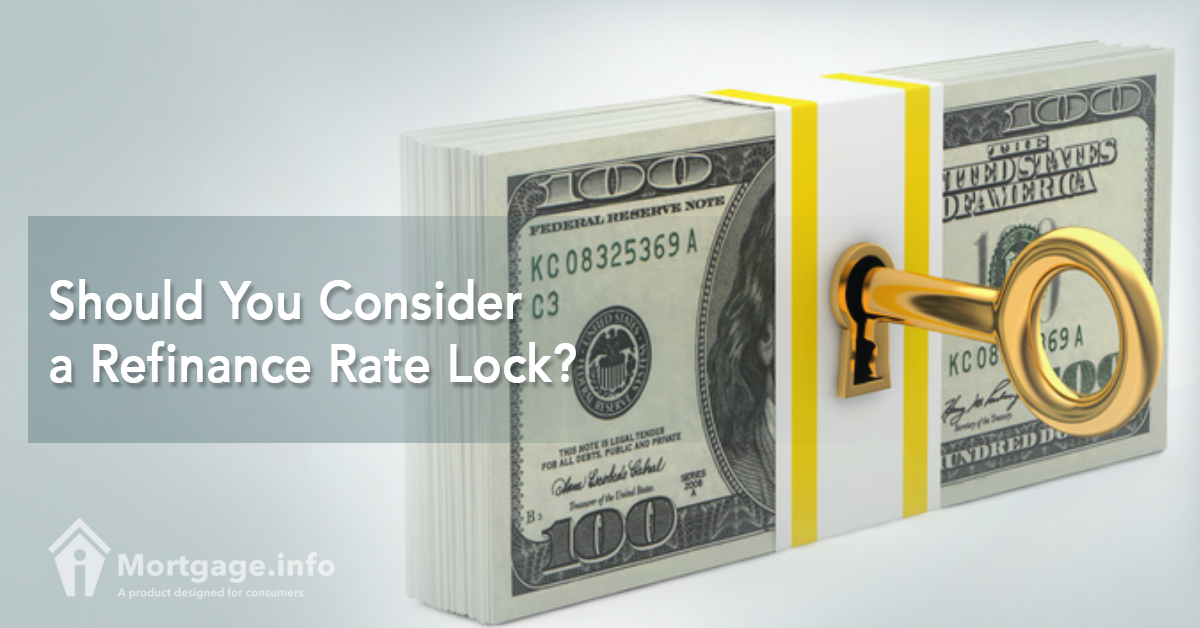A refinance rate lock is like a mortgage rate lock for refinancing purposes. It protects you from further rate disruptions given today’s rate environment. If you haven’t done it when you purchased your home, you might want to explore the concept of a refinance rate lock and how it can possibly benefit you when refinancing.
What is a refinance rate lock?
It is a commitment from the lender/s to give you a certain rate that stays within a specific period. Your rate will be “locked in” while you process your refinance application.
To compensate the lender for holding the rate as is, you will pay points that are generally equivalent to 1% of the mortgage loan. These points can be prepaid at closing or financed together with the mortgage as the lender deems.
As it varies, a lock-in period typically runs between 10 and 60 days, subject to extensions that may be of charge or no cost to you.
For as long as the rate lock is in place, your rate will not be affected by rising rates. If rates do fall, you can ask for a float down provision in the rate lock contract beforehand to allow you to take advantage of lower rates. Or, you can ask the lender to change the rate lock contract at additional costs to you.
What’s in a refinance rate lock contract?
The language of a rate lock-in contract varies but it must contain these terms in writing:
- What you’ve locked in: The interest rate, the points, and the other costs imposed by the lender.
- When is the effective date of the rate lock.
- How much does the rate lock cost.
- When does it exactly expire.
- What are your options post lock-in period.
What’s in a refinance rate lock for you?
Rate locks are as important when refinancing as when buying a home. With today’s rates in an upward trend, it veers you away from even higher rates that would make your refinance loan more expensive. You see when rates are higher, you either have to put a larger down payment to keep your monthly loan payments within reach, or pay more points.
What to consider
1. Lock the rate you want. Be sure you have spent enough time looking up various rates and points or charges being offered by various lenders and have decided it is in your best interest to do so.
2. Lock the rate for longer. If you can afford it, negotiate a longer rate lock period with your lender. While a refinance loan closes within 50 days on an average, there are many factors that can drag your loan timeline, mainly:
- Appraisal, which is required by the lender in determining your home’s current market value. It sometimes takes more than 10 days to complete the final appraisal report owing to the property’s complexity, the appraiser’s hectic schedule, and more.
- Documentation, which includes proofs of income like Form W-2s and paystubs, credit report, statement of assets and debts, and more. Collecting these documents and sending them over and back to the lenders are all part of the underwriting process.
- Contingency. Common refinance hurdles such as high LTV, high DTI and bad credit that would arise along the way. Curing these deficiencies can take time.
3. Lock the rate at the best cost possible. While you shop for the best rates in mind, it’s important to keep an eye for the best possible rate for the rate lock. Lenders may offer a rate lock for free but pricing will depend on the amount of the loan, its term, the lock-in period, etc.
Nobody can predict where mortgage rates are headed next. But it certainly helps if there is an assurance that the mortgage rate you want now will remain in place throughout the life of your loan.

